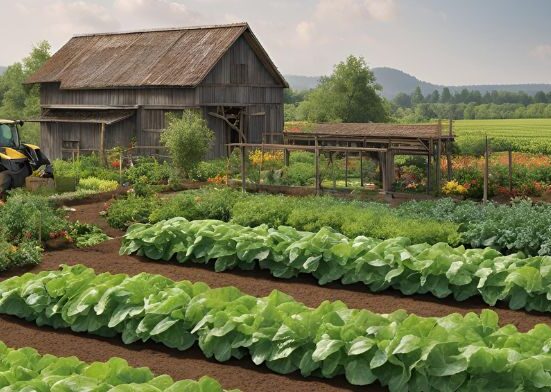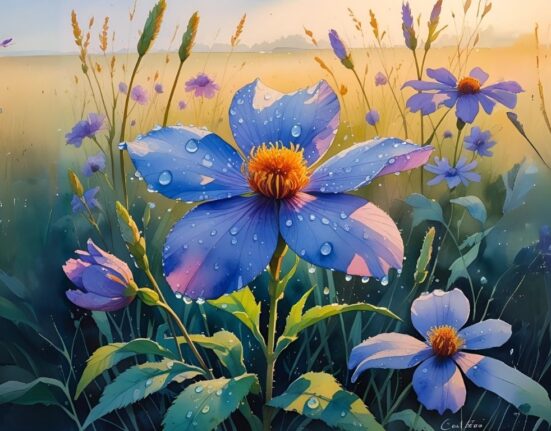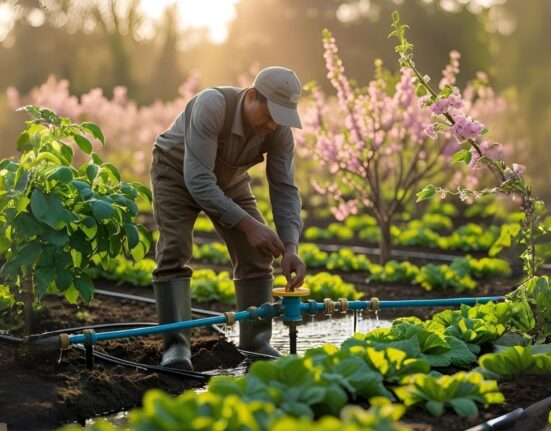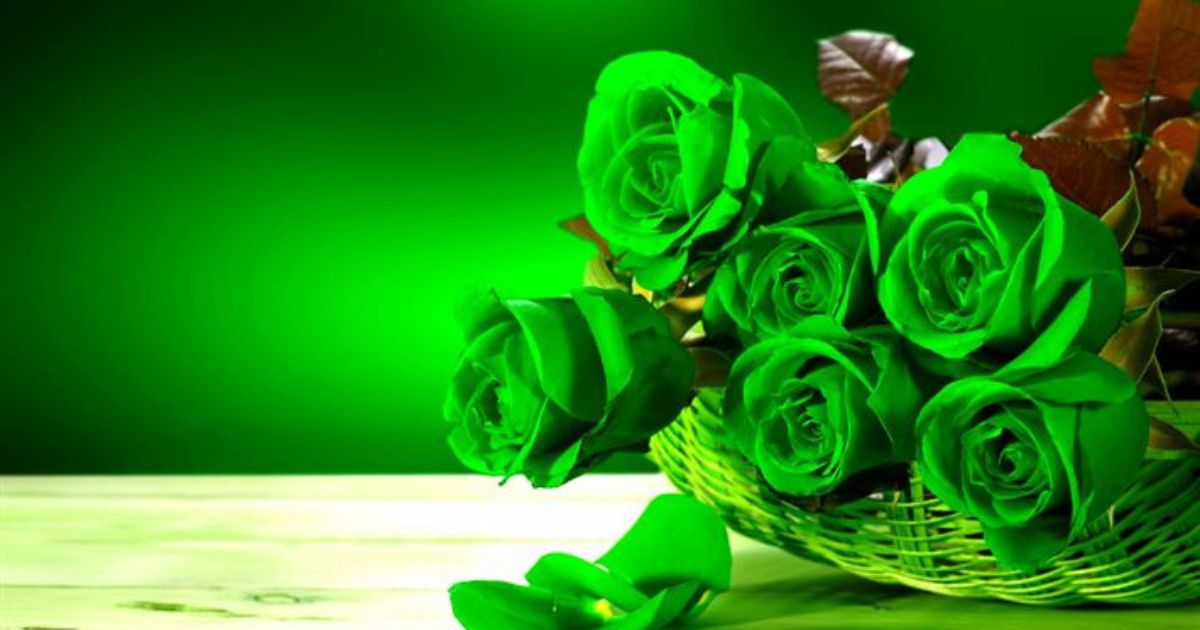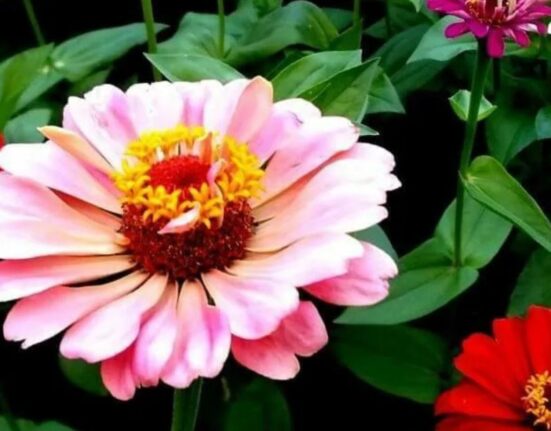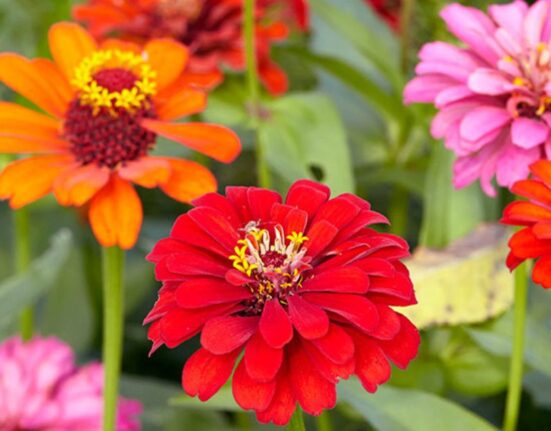When we think of flowers, vibrant hues of red, pink, yellow, and purple often come to mind. However, green flowers, with their understated elegance and refreshing appeal, are an overlooked gem in the world of floristry and gardening. These unique blooms bring a sense of calm, sophistication, and natural harmony to any setting, whether in a garden, a floral arrangement, or as a statement piece in home decor. In this comprehensive exploration, we’ll dive into the world of green flowers, uncovering their varieties, symbolism, care requirements, and how they can elevate your aesthetic with their fresh types of zinnias charm.
Green flowers are not just a quirky anomaly; they represent a growing trend in eco-conscious and minimalist design. From lush lime to deep emerald, their shades complement a wide range of settings, making them versatile for weddings, home gardens, and even modern interior spaces. This blog post will help you navigate the attraction of green flowers, offering insights into their types, uses, and cultivation tips, all while celebrating their unique place in the floral world.
Why Green Flowers?
Green is the colour of nature, symbolising renewal, growth, and vitality. Unlike their more vivid counterparts, green flowers blend seamlessly with foliage, creating a cohesive and serene aesthetic. They’re perfect for those who appreciate subtlety and want to make a statement without overwhelming the senses. Their versatility allows them to pair beautifully with other colours, acting as a neutral backdrop or a bold focal point, depending on the zinnia varieties arrangement.
Green flowers also hold cultural and symbolic significance. In many traditions, green represents fertility, prosperity, and new beginnings, making these blooms a popular choice for weddings and celebrations. Their rarity adds an element of exclusivity, appealing to those who seek something different from the usual floral fare. Whether you’re a gardener, a florist, or simply a flower enthusiast, green blooms offer endless creative possibilities for zinnia plants possibilities.
Popular Types of Green Flowers
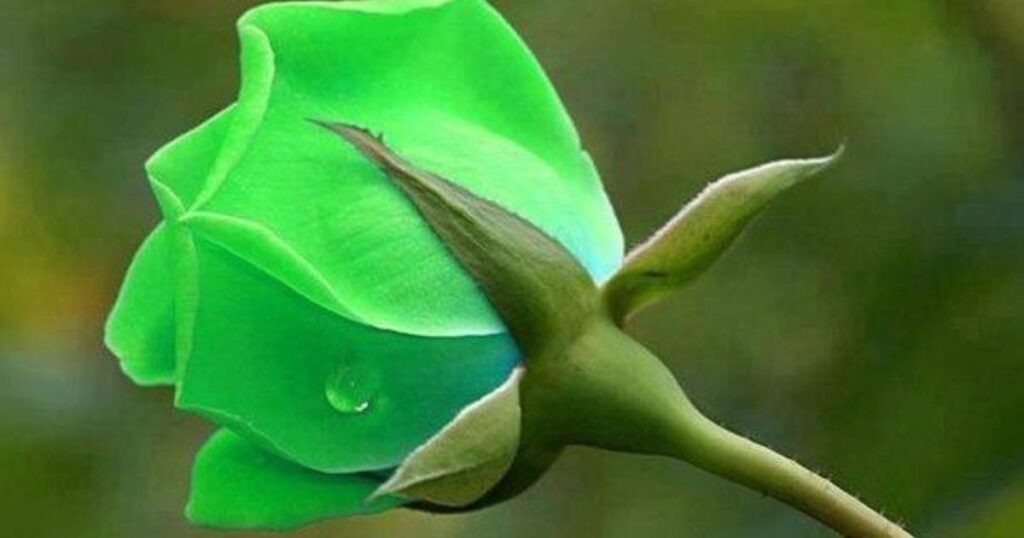
Green flowers bring a fresh, unexpected beauty to gardens, bouquets, and floral arrangements. Their unique hue symbolises renewal, harmony, and growth, making them ideal for both decorative and symbolic purposes. Among the most popular green blooms is the Green Zinnia, known for its vibrant colour and layered petals. Bells of Ireland stand tall with their spire-like shape and ruffled cup-shaped blooms, symbolising good profusion zinnia seeds luck.
Green Chrysanthemums are often used in floral arrangements for their striking colour and long-lasting freshness. Hydrangeas in pale green shades add a soft, romantic feel, while Anthuriums bring an exotic touch with their waxy, heart-shaped flowers. Green Carnations, often associated with celebration and remembrance, offer a classic look with a twist. These green beauties can stand alone or complement other colours, making them versatile for weddings, events, or everyday displays. Whether subtle or bold, profusion zinnia green flowers add natural elegance wherever they zinnia types bloom.
Green Roses (Rosa spp.)
Green roses, such as the ‘Super Green’ or ‘Lime Sublime’ varieties, are a rare and captivating choice. These roses aren’t naturally green but are cultivated through selective breeding or, in some cases, dyed for effect. Their pale green petals exude a soft, romantic vibe, making them a favorite for weddings and upscale short zinnias events.
- Appearance: Pale green to chartreuse petals, often with a creamy undertone.
- Uses: Ideal for bridal bouquets, centrepieces, or mixed arrangements with white or pastel flowers.
- Care Tips: Green roses thrive in well-drained soil with full sun. Regular pruning and fertilizing ensure healthy blooms.
Zinnias (Zinnia elegans ‘Envy’)
The ‘Envy’ zinnia is a standout with its vibrant lime-green petals. These annuals are easy to grow and add a playful, cheerful touch to gardens and arrangements.
- Appearance: Bright, lime-green double blooms that attract pollinators like butterflies.
- Uses: Perfect for summer gardens, borders, or as a filler in mixed bouquets.
- Care Tips: Plant in full sun with well-drained soil. Deadhead regularly to encourage continuous blooming.
Hellebores (Helleborus spp.)
Also known as Lenten roses, hellebores are prized for their early blooming and subtle green shades. Varieties like ‘Green Corsican’ offer nodding, cup-shaped flowers that add elegance to shaded gardens.
- Appearance: Soft green petals, sometimes tinged with pink or white, on sturdy stems.
- Uses: Excellent for woodland gardens, shaded borders, or as a winter focal point.
- Care Tips: Plant in partial shade with rich, moist soil. Hellebores are low-maintenance and deer-resistant.
Green Chrysanthemums (Chrysanthemum spp.)
Chrysanthemums, particularly varieties like ‘Green Mist’ or ‘Kermit,’ bring a bold green hue to fall gardens and arrangements. Their pom-pom or daisy-like blooms are eye-catching and long-lasting.
- Appearance: Bright to deep green, with dense, rounded flower heads.
- Uses: Great for autumn displays, mixed bouquets, or as a standalone feature.
- Care Tips: Prefers full sun and well-drained soil. Pinch back early growth to encourage bushiness.
Bells of Ireland (Moluccella laevis)
Bells of Ireland are known for their tall spikes of green, bell-shaped calyces that surround tiny white flowers. These annuals are a favourite in floral design for their architectural quality.
- Appearance: Vibrant green calyces on long, sturdy stems.
- Uses: Ideal for adding height to arrangements or as a dramatic garden border.
- Care Tips: Grow in full sun with moderate watering. They self-seed easily in favourable conditions.
Green Gladiolus (Gladiolus ‘Green Star’)
The ‘Green Star’ gladiolus offers tall spikes of lime-green flowers that make a striking statement in any garden or bouquet. Its sword-like leaves add to its dramatic appeal.
- Appearance: Star-shaped, lime-green blooms on tall stalks.
- Uses: Ideal for adding vertical accents to arrangements or as a garden focal point.
- Care Tips: Plant corms in spring in full sun with well-drained soil. Stake tall stems to prevent bending.
Green Hydrangeas (Hydrangea macrophylla)
Certain hydrangea varieties, like ‘Limelight’ or ‘Annabelle,’ produce stunning green blooms, especially in their early stages. These shrubs are versatile and easy to grow.
- Appearance: Large, rounded clusters of pale green flowers that may transition to white or pink.
- Uses: Ideal for hedges, mixed borders, or as a centrepiece in large arrangements.
- Care Tips: Prefers partial shade and moist, well-drained soil. Prune after blooming to maintain shape.
Green Orchids (Cymbidium or Dendrobium spp.)
Green orchids, such as the Cymbidium ‘Emerald’ or Dendrobium ‘Green Elf,’ are exotic and elegant. Their waxy petals and long-lasting blooms make them a luxurious choice.
- Appearance: Delicate, waxy green petals with intricate patterns.
- Uses: Perfect for corsages, tropical arrangements, or as a potted plant.
- Care Tips: Requires bright, indirect light and high humidity. Water sparingly to avoid root rot.
Symbolism and Cultural Significance
Green flowers carry a wealth of symbolism across cultures. In Western traditions, green is associated with renewal, growth, and good fortune, making these blooms a popular choice for spring weddings and new ventures. In Eastern cultures, green often symbolizes harmony and balance, aligning with philosophies like Feng Shui, where green flowers can enhance the flow of positive energy in a thumbelina zinnia space.
In floral language, green flowers convey messages of resilience and hope. For example, a bouquet of green roses might express a wish for new beginnings, while Bells of Ireland are often used to wish for good luck. Their unique colour also makes them a symbol of individuality, appealing to those who want to stand out from the crowd.
Using Green Flowers in Design
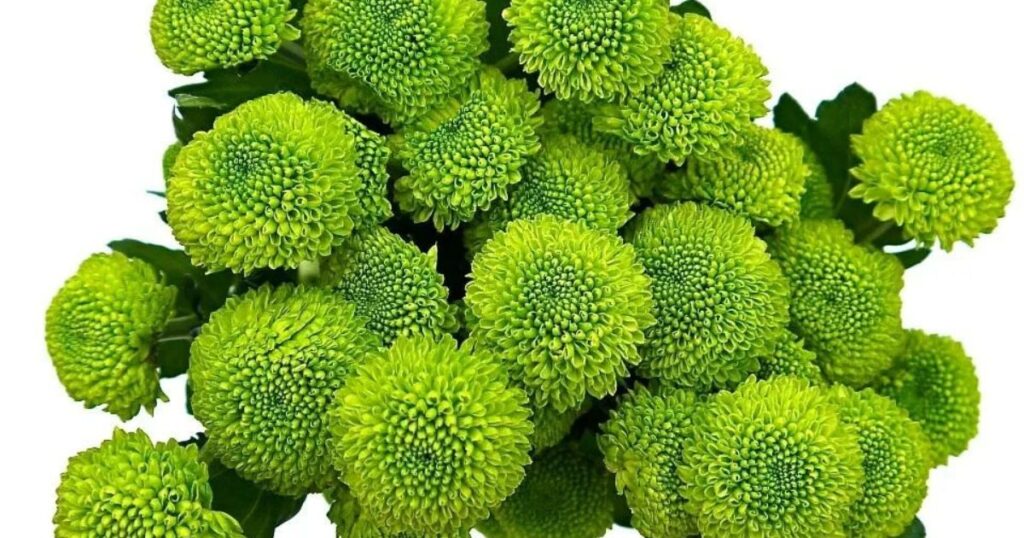 Green flowers offer a unique and refreshing element in floral design, adding balance, harmony, and a natural elegance. Unlike brighter blooms, green flowers such as bells of Ireland, green zinnias, hydrangeas, and hellebores introduce subtle sophistication and freshness. They serve as excellent fillers or focal points, enhancing bouquets, centrepieces, and garden landscapes with a touch of calm and vitality. Designers often use green flowers to create serene, monochromatic arrangements or to contrast vivid florals for a more vibrant, modern zinnia varieties by height effect.
Green flowers offer a unique and refreshing element in floral design, adding balance, harmony, and a natural elegance. Unlike brighter blooms, green flowers such as bells of Ireland, green zinnias, hydrangeas, and hellebores introduce subtle sophistication and freshness. They serve as excellent fillers or focal points, enhancing bouquets, centrepieces, and garden landscapes with a touch of calm and vitality. Designers often use green flowers to create serene, monochromatic arrangements or to contrast vivid florals for a more vibrant, modern zinnia varieties by height effect.
Their versatility makes them suitable for both rustic and contemporary settings. In wedding decor, they symbolize renewal and balance, while in home interiors, they add a natural aesthetic that soothes and uplifts. Whether used alone or blended with other hues, green flowers bring a unique charm that enlivens spaces and highlights nature’s quieter beauty, making them a go-to choice for designers seeking timeless elegance and natural appeal.
Weddings
Green flowers are a growing trend in wedding floristry, offering a fresh alternative to traditional white or pastel blooms. A bouquet of green roses, hydrangeas, and Bells of Ireland creates a sophisticated, modern look. Pair them with white flowers for a classic touch or with bold colours like burgundy or navy for contrast.
- Tip: Use green chrysanthemums or zinnias for boutonnieres and corsages to tie the theme together.
- Example Arrangement: Combine green hydrangeas with eucalyptus and white peonies for a lush, romantic bridal bouquet.
Home Decor
Green flowers bring a touch of nature indoors, complementing minimalist and modern decor styles. A vase of green gladiolus or orchids can serve as a striking centrepiece, while hellebores in a pot add charm to a shaded patio.
- Tip: Mix green flowers with foliage like ferns or monstera leaves for a cohesive, nature-inspired look.
- Example Arrangement: Place a cluster of green zinnias in a clear glass vase for a simple, vibrant table display.
Gardens
In the garden, green flowers create a serene, monochromatic effect when paired with lush greenery. They’re perfect for shaded areas or as a backdrop to brighter blooms. Hellebores and green hydrangeas thrive in partial shade, while zinnias and gladiolus add pops of green in sunny spots.
- Tip: Plant green flowers in clusters to create a focal point or mix them with contrasting colours for a dynamic border.
- Example Planting: Combine green gladiolus with purple salvia and white cosmos for a vibrant summer garden.
Events and Celebrations
Green flowers are ideal for eco-themed events, St. Patrick’s Day celebrations, or garden parties. Their fresh, natural hue aligns with sustainability and environmental consciousness, making them a favourite for green weddings and corporate events.
- Tip: Use Bells of Ireland for tall, dramatic centrepieces at formal events.
- Example Arrangement: Create a cascading centrepiece with green chrysanthemums, ivy, and white lilies for a lush, elegant look.
Growing and Caring for Green Flowers
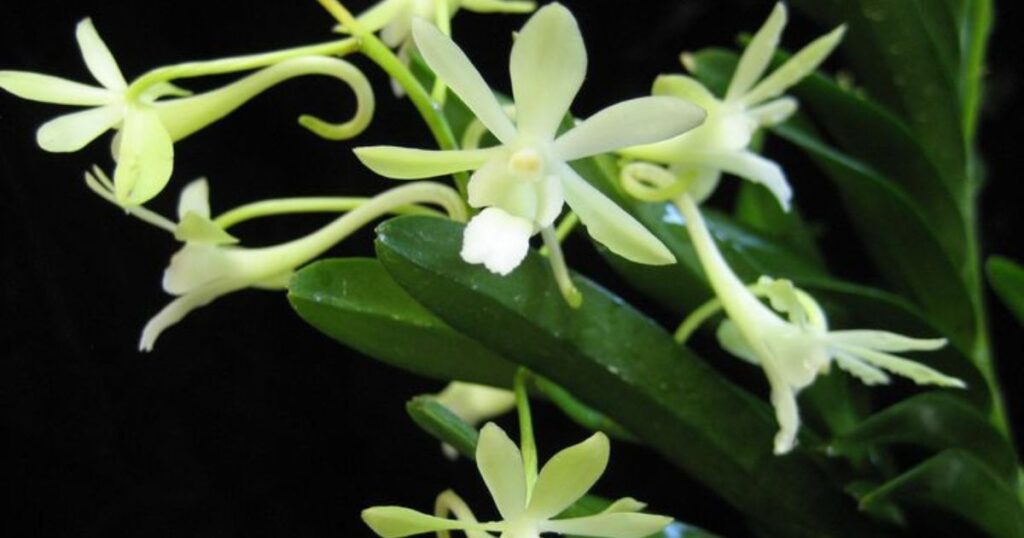 Green flowers bring a refreshing twist to any garden with their unique hues and elegant appeal. To grow them successfully, choose varieties like Bells of Ireland, Green Zinnias, or Envy Dahlias that suit your climate and soil type. Plant them in well-drained soil with plenty of organic matter to encourage healthy root development. Most green blooms thrive in full sun, though some may tolerate partial shade. Regular watering is essential, especially during dry spells, but avoid waterlogging the roots.
Green flowers bring a refreshing twist to any garden with their unique hues and elegant appeal. To grow them successfully, choose varieties like Bells of Ireland, Green Zinnias, or Envy Dahlias that suit your climate and soil type. Plant them in well-drained soil with plenty of organic matter to encourage healthy root development. Most green blooms thrive in full sun, though some may tolerate partial shade. Regular watering is essential, especially during dry spells, but avoid waterlogging the roots.
Deadheading spent blooms and applying a balanced fertiliser every few weeks will help maintain vibrant growth and continuous blooming. Watch for pests like aphids or mildew and treat promptly with natural or organic solutions. Whether used in borders, containers, or floral arrangements, green flowers add a subtle yet striking charm to your garden. With just a little care, they reward you with lush, eye-catching beauty all season long.
Green Flowers in Modern Trends
The rise of eco-conscious living and minimalist design has brought green flowers into the spotlight. Florists and gardeners are increasingly drawn to their subtle beauty and versatility. Here are some current trends featuring green flowers:
- Monochromatic Arrangements: Combining various shades of green, from lime to olive, creates a sophisticated, cohesive look.
- Sustainable Floristry: Green flowers align with the push for eco-friendly practices, as many are locally grown and require less processing than dyed blooms.
- Tropical Vibes: Green orchids and hydrangeas are popular in tropical-inspired designs, paired with lush foliage like palm leaves.
- Minimalist Aesthetics: Green flowers fit perfectly in modern, minimalist spaces, offering a clean, uncluttered look.
Social media platforms like Instagram and Pinterest are brimming with inspiration for green flower arrangements, showcasing their appeal in everything from boho-chic weddings to sleek urban interiors.
Challenges and Considerations
While green flowers are stunning, they come with a few challenges. Their rarity can make them harder to source, especially for specific varieties like green roses or orchids. Additionally, some green flowers, like hydrangeas, may change colour as they mature, requiring careful timing for use in arrangements.
Another consideration is their understated appearance. While this is part of their charm, green flowers may not suit those seeking bold, vibrant displays. Pairing them with contrasting colours or textures can help balance their subtlety. Finally, growing green flowers requires patience, as some varieties, like hellebores, take time to establish. Researching and selecting the right plants for your climate and garden conditions is key to success.
Where to Find Green Flowers
Green flowers can be sourced from local nurseries, online plant retailers, or speciality florists. For gardeners, seed companies like Burpee or Johnny’s Selected Seeds offer green zinnia and Bells of Ireland seeds. For cut flowers, check with local florists or online platforms like The Bouqs Co. or UrbanStems, which often carry unique varieties.
If you’re looking to grow your own, consider starting with easy-to-grow options like zinnias or Bells of Ireland. For more exotic choices, like green orchids, visit speciality nurseries or orchid societies for healthy plants and expert advice.
Tips for Growing Green Flowers Successfully
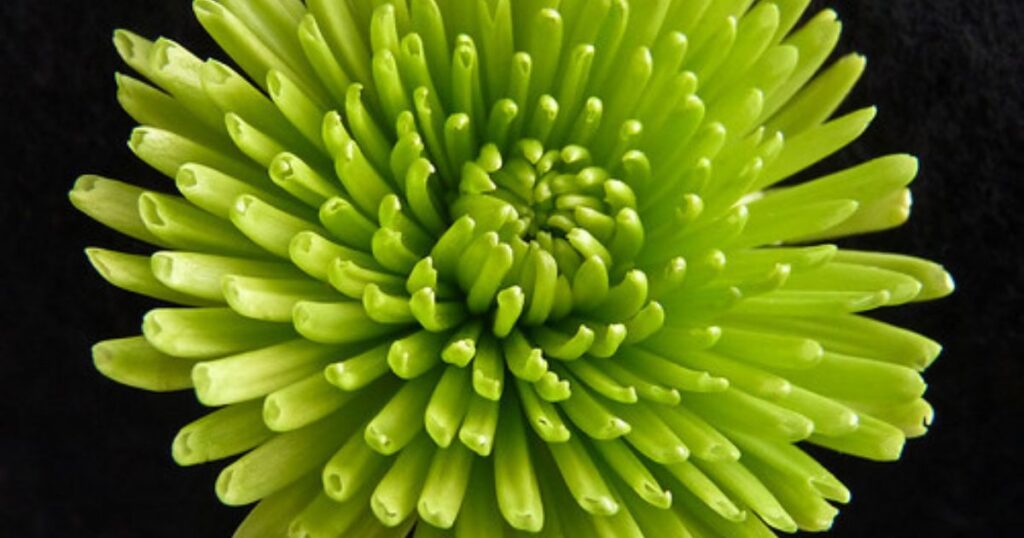 Growing green flowers can add a refreshing and unique touch to any garden. To achieve success, start by selecting the right varieties like Bells of Ireland, green zinnias, or Envy cosmos—these thrive in well-drained soil and full to partial sunlight. Always check the specific needs of your chosen plants, as some may prefer cooler temperatures or more humidity. Prepare your soil by enriching it with compost to boost nutrients and ensure good drainage. Water regularly but avoid overwatering; green flowers are prone to root rot if the soil stays soggy.
Growing green flowers can add a refreshing and unique touch to any garden. To achieve success, start by selecting the right varieties like Bells of Ireland, green zinnias, or Envy cosmos—these thrive in well-drained soil and full to partial sunlight. Always check the specific needs of your chosen plants, as some may prefer cooler temperatures or more humidity. Prepare your soil by enriching it with compost to boost nutrients and ensure good drainage. Water regularly but avoid overwatering; green flowers are prone to root rot if the soil stays soggy.
Deadhead spent blooms to encourage continuous flowering and maintain plant health. Regularly check for pests and diseases, and treat them early with organic solutions. Mulching helps retain moisture and keeps roots cool, especially during hot weather. With consistent care, patience, and a little planning, your green flowers will flourish, offering a fresh pop of colour that stands out in any floral display.
Start with Easy Varieties
When beginning your gardening journey, it’s wise to start with easy plant varieties that are low-maintenance and forgiving. These beginner-friendly plants thrive with minimal care, making them ideal for new gardeners or those with busy schedules. Look for hardy, pest-resistant types that don’t require constant pruning, fertilizing, or delicate conditions. Flowers, marigolds, zinnias, and sunflowers are colourful and reliable. In the vegetable garden, try radishes, lettuce, or cherry tomatoes—they grow quickly and offer a satisfying harvest. Easy herbs like mint, basil, and chives also do well in pots or garden beds with basic sunlight and watering.
Choose the Right Location
Selecting the correct location is a critical first step in ensuring the success of your garden or planting project. The ideal spot should receive plenty of sunlight—most flowering plants and vegetables thrive in areas with at least 6 to 8 hours of direct sunlight daily. Observe your space throughout the day to identify sunny, shaded, and partially shaded areas. Consider access to water, soil quality, and good drainage to avoid root rot or soggy conditions. Wind exposure is another factor—too much wind can damage delicate plants or dry out the soil quickly.
Conclusion:
Green flowers are a celebration of nature’s understated beauty, offering a fresh and versatile addition to gardens, homes, and events. From the delicate charm of green roses to the bold spikes of Bells of Ireland, these blooms bring a unique flair that complements any style. Whether you’re a seasoned gardener or a floral enthusiast, incorporating green flowers into your repertoire can elevate your designs with their serene, sophisticated charm.
By understanding their varieties, care needs, and creative uses, you can harness the power of green flowers to create stunning displays that captivate and inspire. So, the next time you’re planning a garden or arranging a bouquet, consider the fresh, vibrant allure of green flowers—they’re sure to leave a lasting impression.
FAQ:
What are Green Flowers?
Green flowers are blossoms that feature green petals or foliage as a dominant colour. Unlike typical brightly colored flowers, green flowers offer a fresh, natural, and often elegant look that can complement many garden styles and floral arrangements.
Why Choose Green Flowers for a Garden or Bouquet?
Green flowers bring a unique charm with their soothing, calming hues. They add texture and depth to floral designs, blend well with other colours, and create a modern, sophisticated vibe in gardens or arrangements.
What are some Popular types of Green Flowers?
Some popular green flowers include Green Zinnia, Bells of Ireland, Green Chrysanthemums, Green Carnations, Hellebores, and Jade Viburnum. Each offers a distinct shade and texture.
Are Green Flowers easy to grow?
Many green flowers are relatively easy to grow, especially varieties like Bells of Ireland and Chrysanthemums. However, care requirements vary by species, so it’s essential to research the specific needs, such as soil, sunlight, and watering.
Can Green Flowers Attract Pollinators?
Yes! Despite their subtle colour, many green flowers attract pollinators like bees and butterflies, especially if they have nectar-rich centres or complementary scents.




